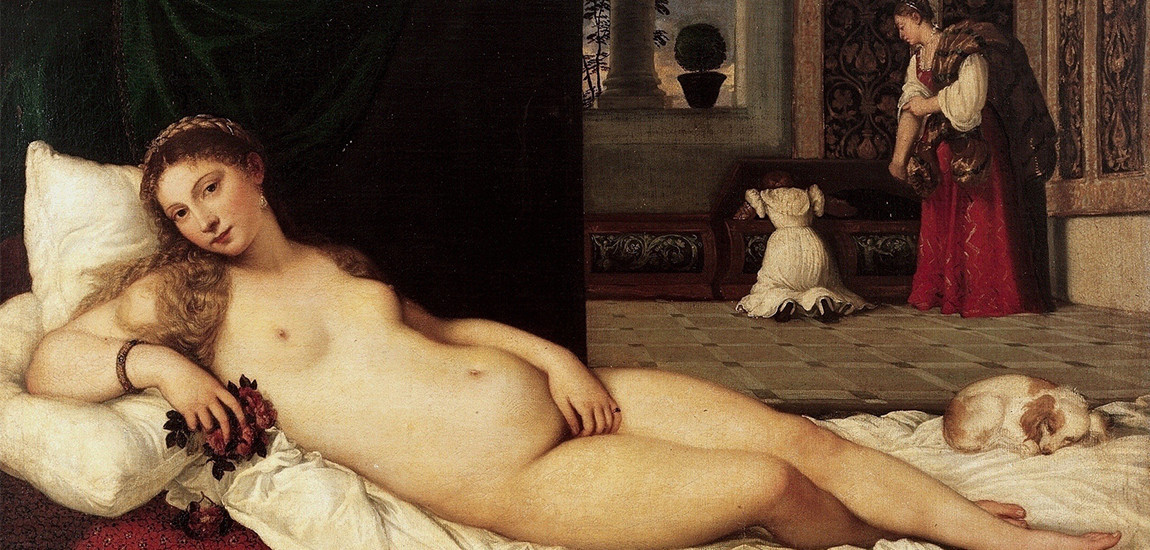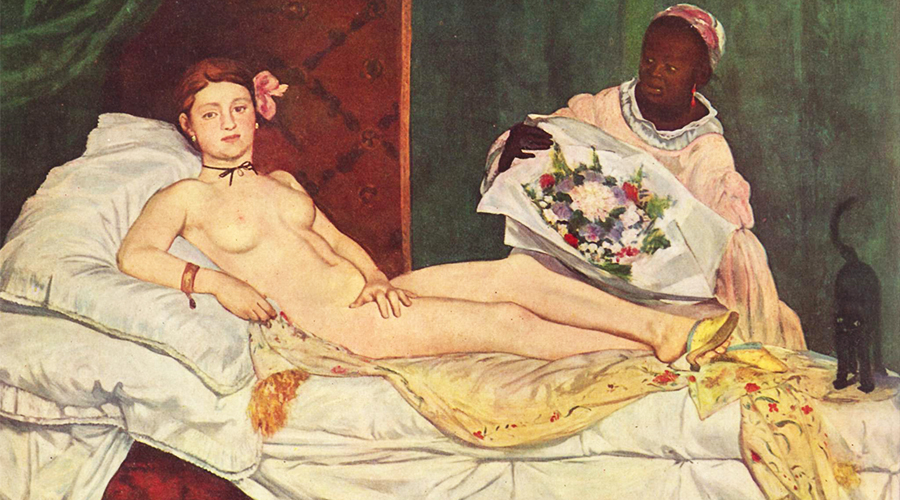
Masterpieces of Art: the scandalous Titian's Venus
The
Venus of Urbino, or simply Titian's Venus, is one of the most
famous paintings in the history of art, admired as much as discussed, it was a
source of inspiration for many artists.
Guidobaldo II della Rovere di Urbino, commissioned this painting from the Venetian painter with the intention of showing his young wife, Giulia da Varano, the example of a wife that he expected her to become: a woman first of all faithful and aware of her marital duties.
This is why we find the girl depicted undressed on her bed, with one hand covering her pudenda in an allusive attitude, and also because there is a little dog - a symbol of loyalty par excellence - crouched at her feet.
Red roses, on the other hand, symbolize the goddess Venus and beauty. They will fade away, but the little dog will remain forever next to the owner.
The pose of the girl derives from that of the Venere pudica of the
classical statuary, which Giorgione had already used in his Sleeping
Venus of 1510.
Titian is inspired by Giorgione's painting, but carries out an operation of contemporaneization of the Venus, which instead of being inserted in a classical context, is depicted in a Renaissance setting.
In
the background there are two handmaids, also dressed in Renaissance fashion,
who extract clothes from a chest for the young bride to wear.
In the nineteenth century, Titian's painting once again became very popular among artists who freely drew inspiration from it for their works.
Ingres looked
to the Venus of Urbino to paint The Great Odalisque in 1814,
while Manet made a modern reinterpretation of it in 1863 with his Olympia,
turning the young bride / Venus into a prostitute. A representation that
certainly made some academic noses turn up.

But not only artists were fascinated by it, even writers found something to reason about this work of art. Mark Twain was totally shocked when he saw it at the Uffizi, so much so that in 1880, in A Tramp Abroad, he defined the Venus of Urbino as "the foulest, the vilest, the obscenest picture the world possesses".
The greatness of this timeless work of art is testified by the fact that the painting is still there, inside one of the most famous museums in the world, and continues to be the matter of talk and to be admired, even hundreds of years after its creation.



